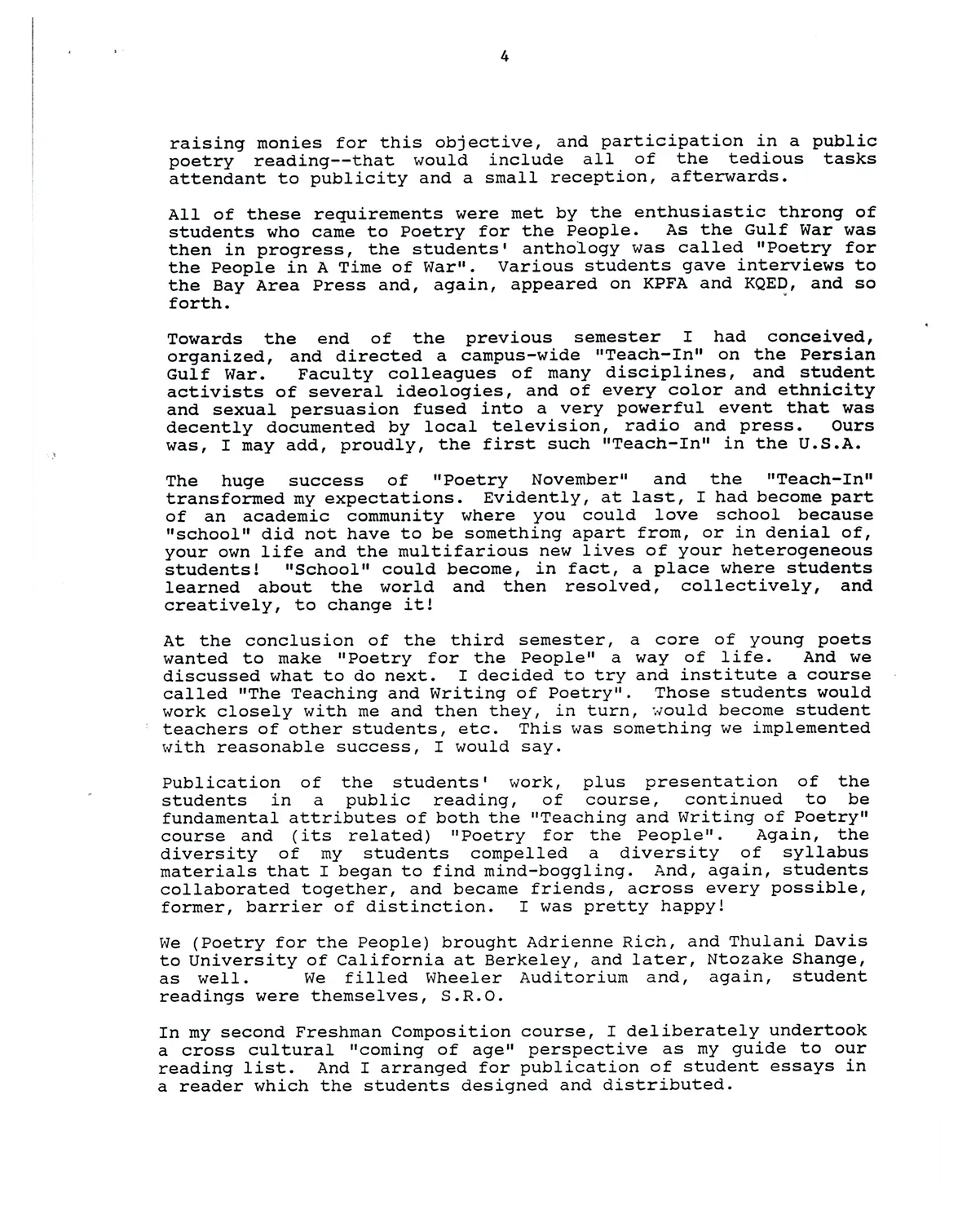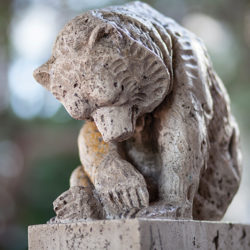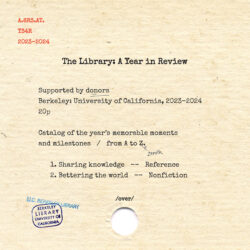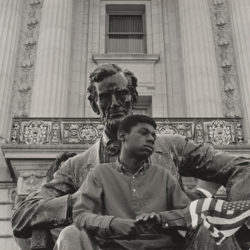
Jordan describes the inception and accomplishments of Poetry for the People, or P4P, in her merit review statement: “At the conclusion of the third semester, a core of young poets wanted to make ‘Poetry for the People’ a way of life. And we discussed what to do next. I decided to try and institute a course called ‘The Teaching and Writing of Poetry’. Those students would work closely with me and then they, in turn, would become student teachers of other students, etc. This was something we implemented with reasonable success, I would say.”
All of these requirements were met by the enthusiastic throng of students who came to Poetry for the People. As the Gulf War was then in progress, the students’ anthology was called “Poetry for the People in A Time of War”. Various students gave interviews to the Bay Area Press and, again, appeared on KPFA and KQED, and so forth.
Towards the end of the previous semester I had conceived, organized, and directed a campus-wide “Teach-In” on the Persian Gulf War. Faculty colleagues of many disciplines, and student activists of several ideologies, and of every color and ethnicity and sexual persuasion fused into a very powerful event that was decently documented by local television, radio and press. Ours was, I may add, proudly, the first such “Teach-In” in the U.S.A.
The huge success of “Poetry November” and the “Teach-In” transformed my expectations. Evidently, at last, I had become part of an academic community where you could love school because “school” did not have to be something apart from, or in denial of, your own life and the multifarious new lives of your heterogenous students! “School” could become, in fact, a place where students learned about the world and then resolved, collectively, and creatively, to change it!
At the conclusion of the third semester, a core of young poets wanted to make “Poetry for the People” a way of life. And we discussed what to do next. I decided to try and institute a course called “The Teaching and Writing of Poetry”. Those students would work closely with me and then they, in turn, would become student teachers of other students, etc. This was something we implemented with reasonable success, I would say.
Publication of the students’ work, plus presentation of the students in a public reading, of course, continued to be fundamental attributes of both the “Teaching and Writing of Poetry” course and (its related) “Poetry for the People”. Again, the diversity of my students compelled a diversity of syllabus materials that I began to find mind-boggling. And, again, students collaborated together, and became friends, across every possible, former, barrier of distinction. I was pretty happy!
We (Poetry for the People) brought Adrienne Rich, and Thulani Davis to University of California at Berkeley, and later, Ntozake Shange, as well. We filled Wheeler Auditorium and, again, student readings were themselves, S.R.O.
In my second Freshman Composition course, I deliberately undertook a cross cultural “coming of age” perspective as my guide to our reading list. And I arranged for publication of student essays in a reader which the students designed and distributed. (continued on next page)
Merit review statement, by June Jordan, circa 1993, Carton 6:50, Barbara Christian papers, BANC MSS 2003/199 c, The Bancroft Library, University of California, Berkeley.




